Haggadot Highlights
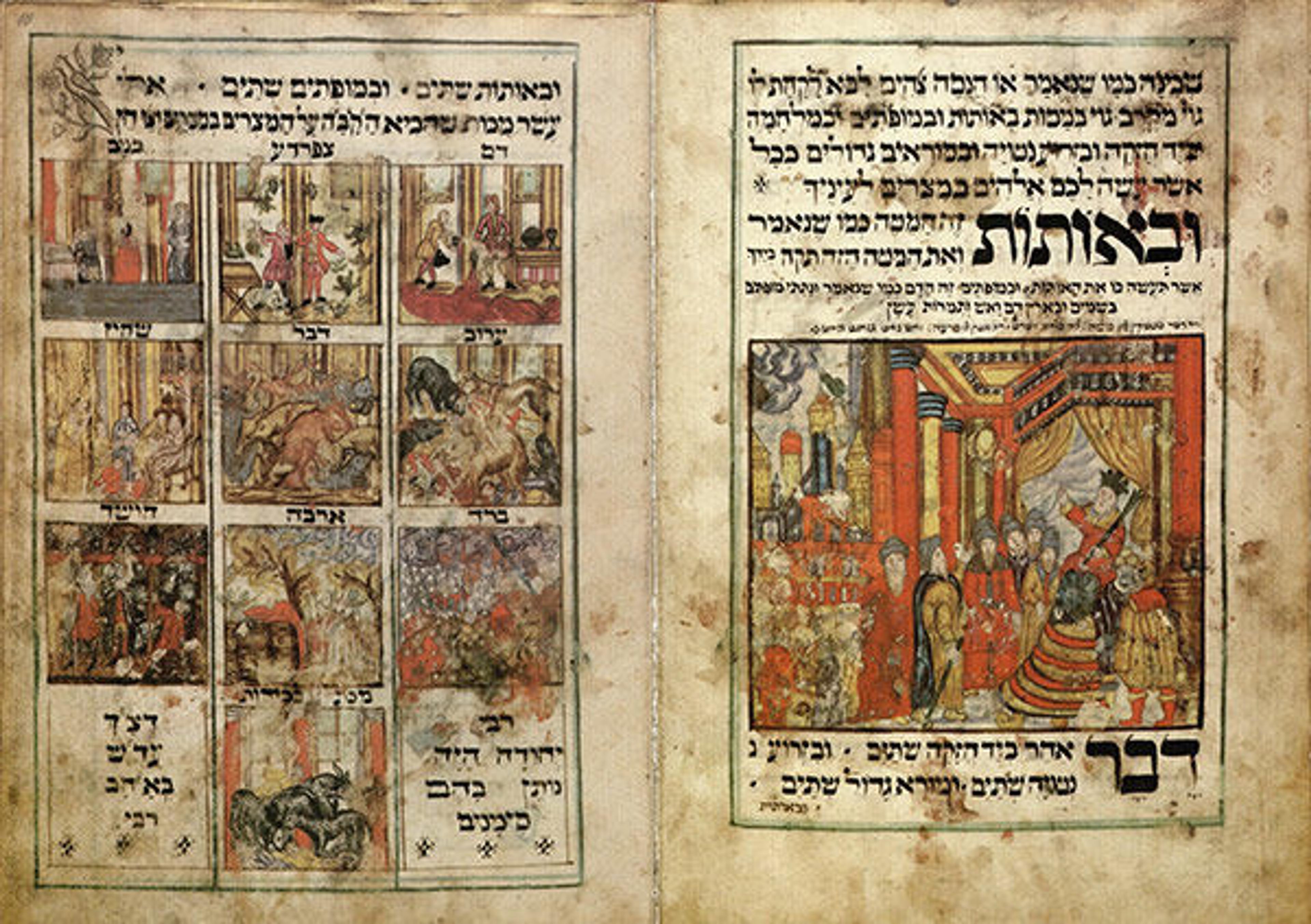
Die Frankfurter Pessach Haggadah : eine illustrierte Handschrift des Jakob ben Michael May Segal von 1731 im Jüdischen Museum der Stadt Frankfurt am Main. Berlin : Propyläen Verlag, 1988. Gift of Friends of Thomas J. Watson Library
«Over the past ten years, Watson Library has built a rich collection of facsimiles of medieval illustrated Haggadot, the texts read at the Passover Seder meal. These purchases, made possible by Friends of the Thomas J. Watson Library, support the Museum's ongoing series of installations focusing on single masterworks of Hebrew manuscript illumination such as the Washington Haggadah, the Lisbon's Hebrew Bible, and the Rylands Haggadah. These facsimiles also complement Watson's collection of research material on Latin illustrated manuscripts from the same period, since illuminators occasionally worked on both Hebrew and Latin manuscripts.»
The Birds Head Haggadah
The Birds Head Haggadah, named for its depiction of human figures with eagle-beaked faces, was created in thirteenth-century South Germany, making it the earliest illustrated Ashkenazi Haggadah. Animal-headed figures, not unique to The Birds Head Haggadah, can be found in several thirteenth- and fourteenth-century works. During the thirteenth century, a prohibition against figurative art was beginning to soften, and while the representation of the human face was discouraged, representations of animals and nature became more acceptable. Animal-headed humans were one way artists of the time could circumvent the prohibition.
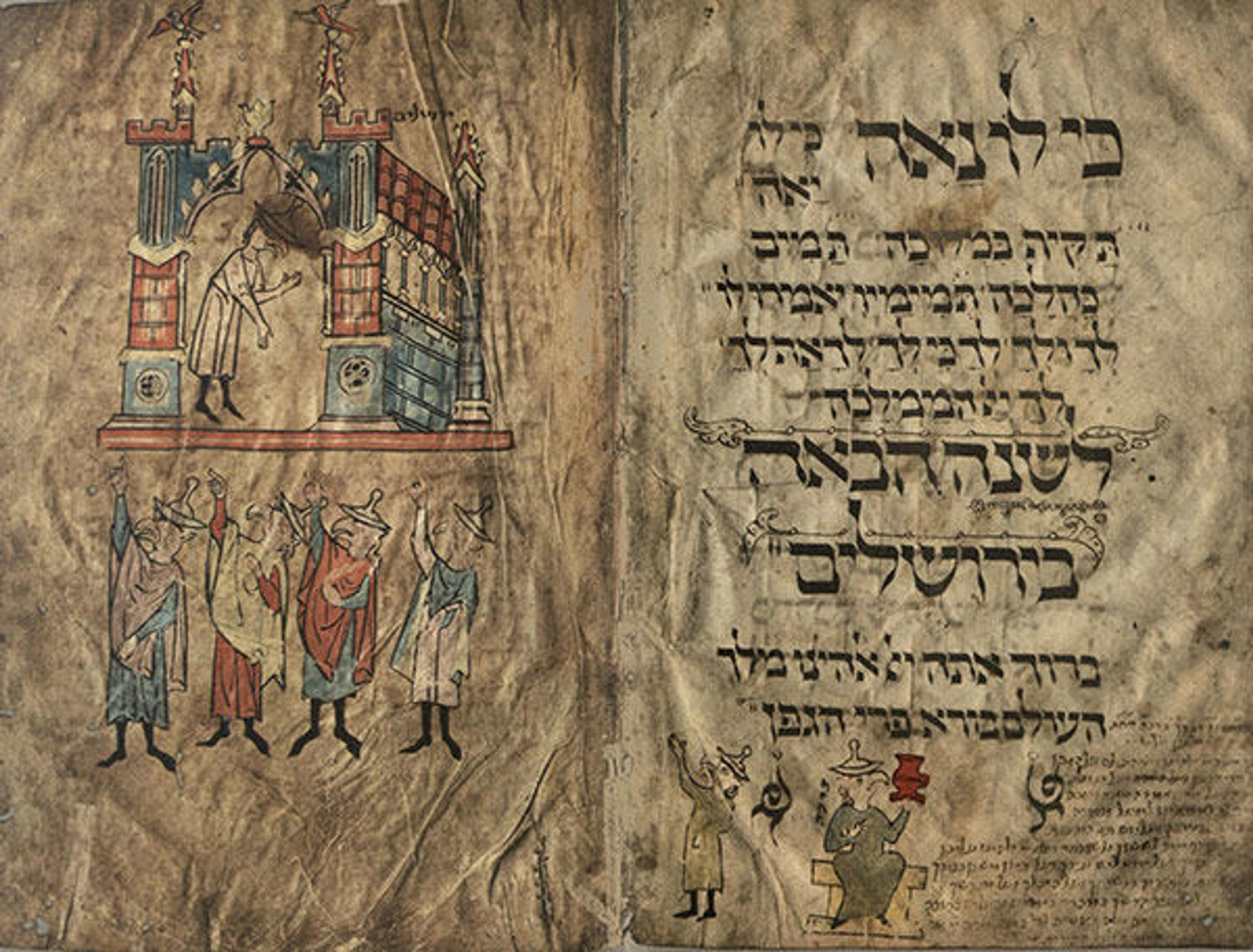
The Birds Head Haggada of the Bezalel National Art Museum in Jerusalem: facsimile volume printed in collo-type by Kunstanstalt Max Jaffé in Vienna = Hagadat rashe ha-tsiporim shel Bet ha-nekhot ha-le'umi le-omanut Betsal'el, Yerushalayim : kerekh faḳsimili nidpas bi-defus Maḳs Yafeh be-Ṿinah. Jerusalem : L.A. Mayer Library for Beth David Salomons by Tarshish Books, 1965. Gift of Friends of Thomas J. Watson Library
The Barcelona Haggadah
The Barcelona Haggadah was created in Catalonia in the late fourteenth century. Most likely created by several scribes, the manuscript is written in large letters, which suggests that the text was meant to be read simultaneously by more than one person. This Haggadah contains a large number of illustrations of Passover ceremonies that show families in various stages of the rituals performed during the reading of Exodus, and serves as an important document depicting the celebration of Passover in Medieval Europe. The illustration below shows the rarely depicted ritual of breaking and hiding one of three pieces of matzah under the tablecloth; the figure on the right holds one piece, and the figure on the left places the hidden piece, the afikomen, under the tablecloth as the children watch. The child who found the afikomen would traditionally be presented with a coin.
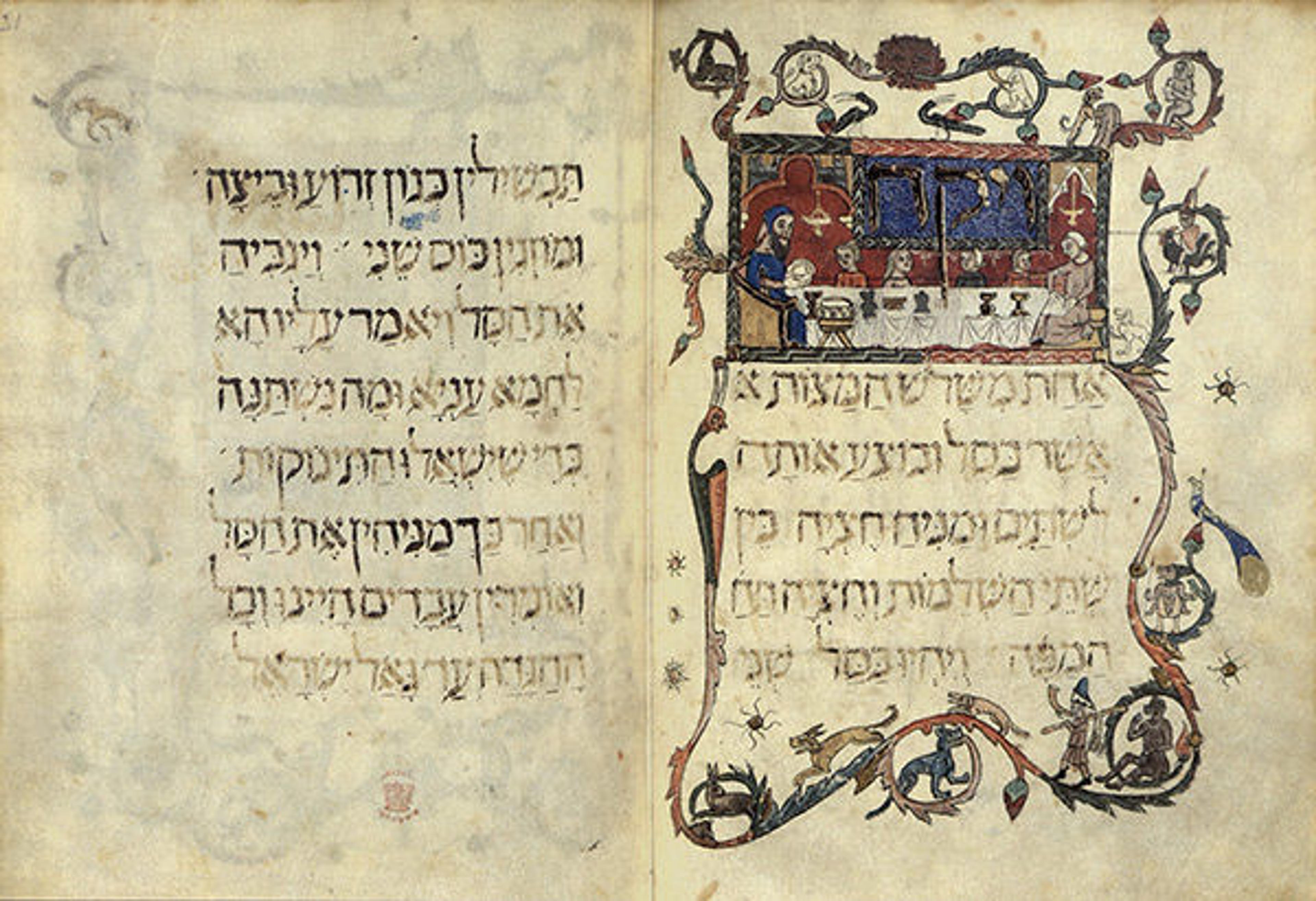
The Barcelona Haggadah. London : Facsimile Editions, 1992. Gift of Friends of Thomas J. Watson Library
The Golden Haggadah
The Golden Haggadah is one of the earliest examples of a Sephardic Haggadah. The manuscript was created in fourteenth-century Spain, during the Gothic period. A codex in 102 folios, the majority of the manuscript is written on parchment. The Haggadah is divided into three main parts: the miniatures, whose brilliant golden illumination give the Haggadah its name; the Haggadah itself; and finally a series of liturgical poems. While Ashkenazi Haggadot tend to be illustrated in the margins only, Sephardic Haggadot often have full-page illuminations. There are fourteen pages of miniatures in The Golden Haggadah, each divided into four panels, primarily depicting sequential episodes from Exodus and Genesis. Each panel has a burnished gold-leaf background, making the illustrations shimmer and shine, and demonstrating the importance of the text to its owner (as well as the wealth of its owner).
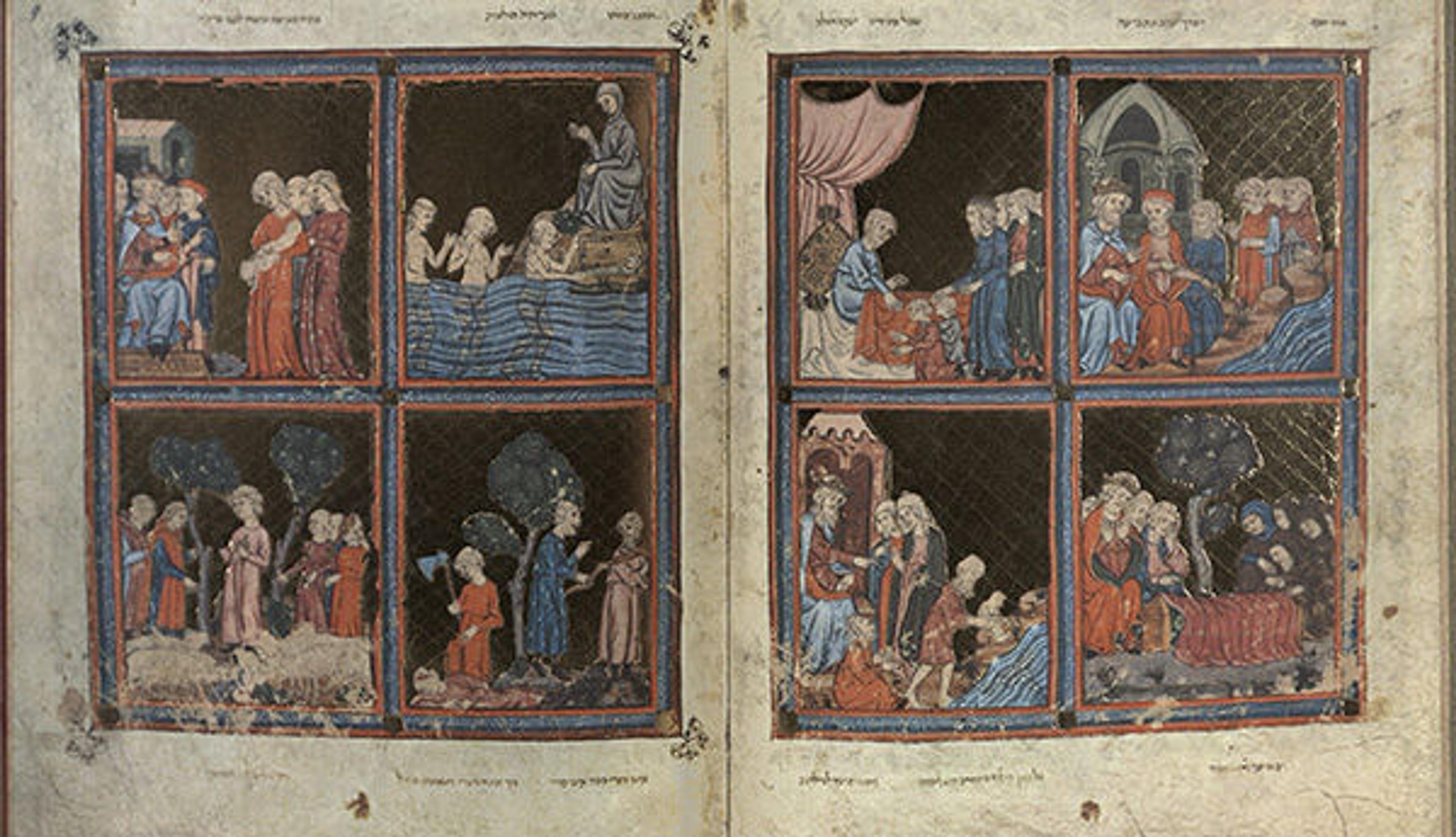
Narkiss, Bezalel. The Golden Haggadah. London : British Library, 1997. Gift of Friends of Thomas J. Watson Library
The Sarajevo Haggadah
As with The Golden Haggadah, The Sarajevo Haggadah was created in Spain, around 1350, and has full pages of illumination consisting of miniatures in four panels per page. The Sarajevo Haggadah has a rich provenance. It was first taken out of Spain during the 1492 expulsion, resurfaced in Italy about one hundred years later, and was sold to the National Museum in Sarajevo in 1894. During World War II, the museum's chief librarian smuggled the Haggadah out of Sarajevo and away from the Nazis. It later survived a museum looting during the Bosnian War (1992–1995) and is now on permanent display in the National Museum.
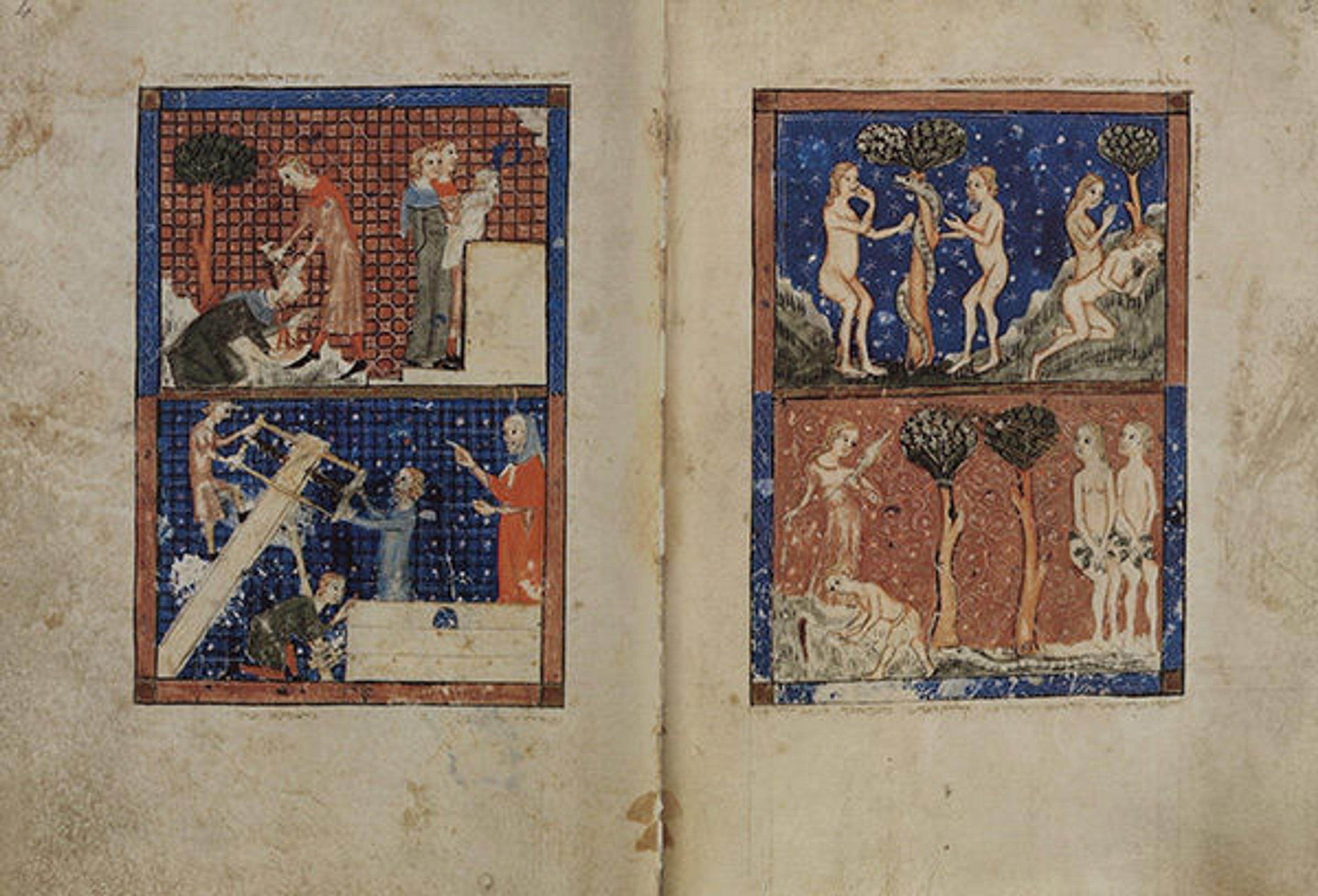
The Sarajevo Haggadah. Sarajevo: Rabic, 2010. Gift of Friends of Thomas J. Watson Library
The Floersheim Haggadah
The Floersheim Haggadah was created in fifteenth-century Germany, written on and bound in vellum with gold tooling. It is traditional for Ashkenazi Haggadot to have illustrations in the margins, providing a frame for the text, as well as notes in a different hand from the scribe. The illustrations are Gothic in nature, inspired by the architecture of the time, and the marginalia attest to this book's vital life and its many active readings.
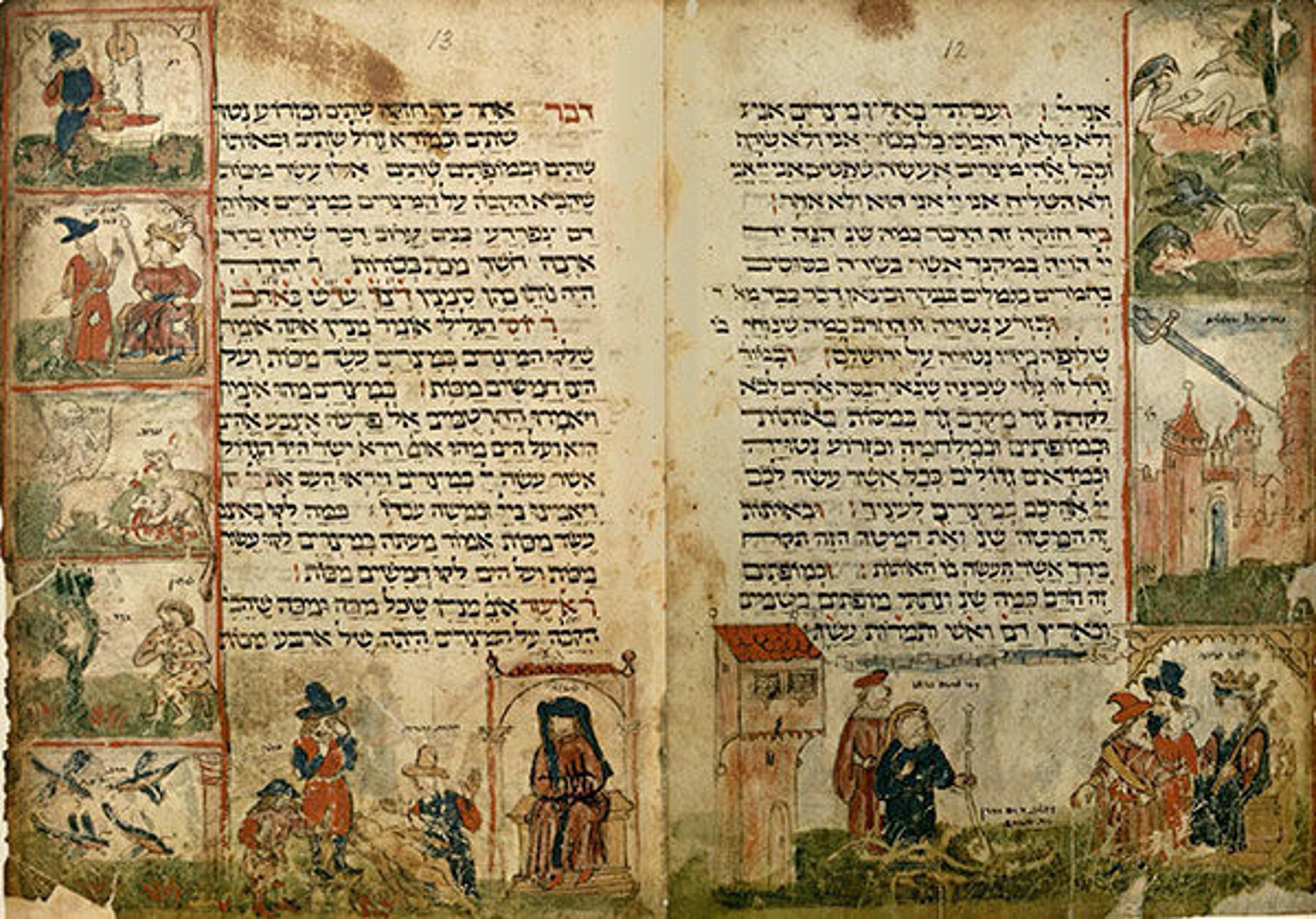
The Floersheim Haggadah: a facsimile of a Haggadah written in the year 5262 (1502), formerly in the collection of David Solomon Sassoon, published through the generosity of Alexander Floersheim, Surich-Hersliyya, 1562 (2002). Zurich: 2002. Gift of Friends of Thomas J. Watson Library
The Washington Haggadah
The Washington Haggadah was created in Germany, in 1478—a time when printing presses in Spain and Italy had begun using Hebrew type, but shortly before the first printed Haggadah was made. It was written and illustrated by Joel ben Simeon, a fifteenth-century scribe and artist who is credited with several important manuscripts. His composition is dense and unframed, as seen in the example below, and even in his mature style his early German education is evident: his figures have thin bodies and round faces, though facial profiles appear pointed. The image below is a whimsical depiction of Elijah arriving on a donkey, accompanied by an entire family.
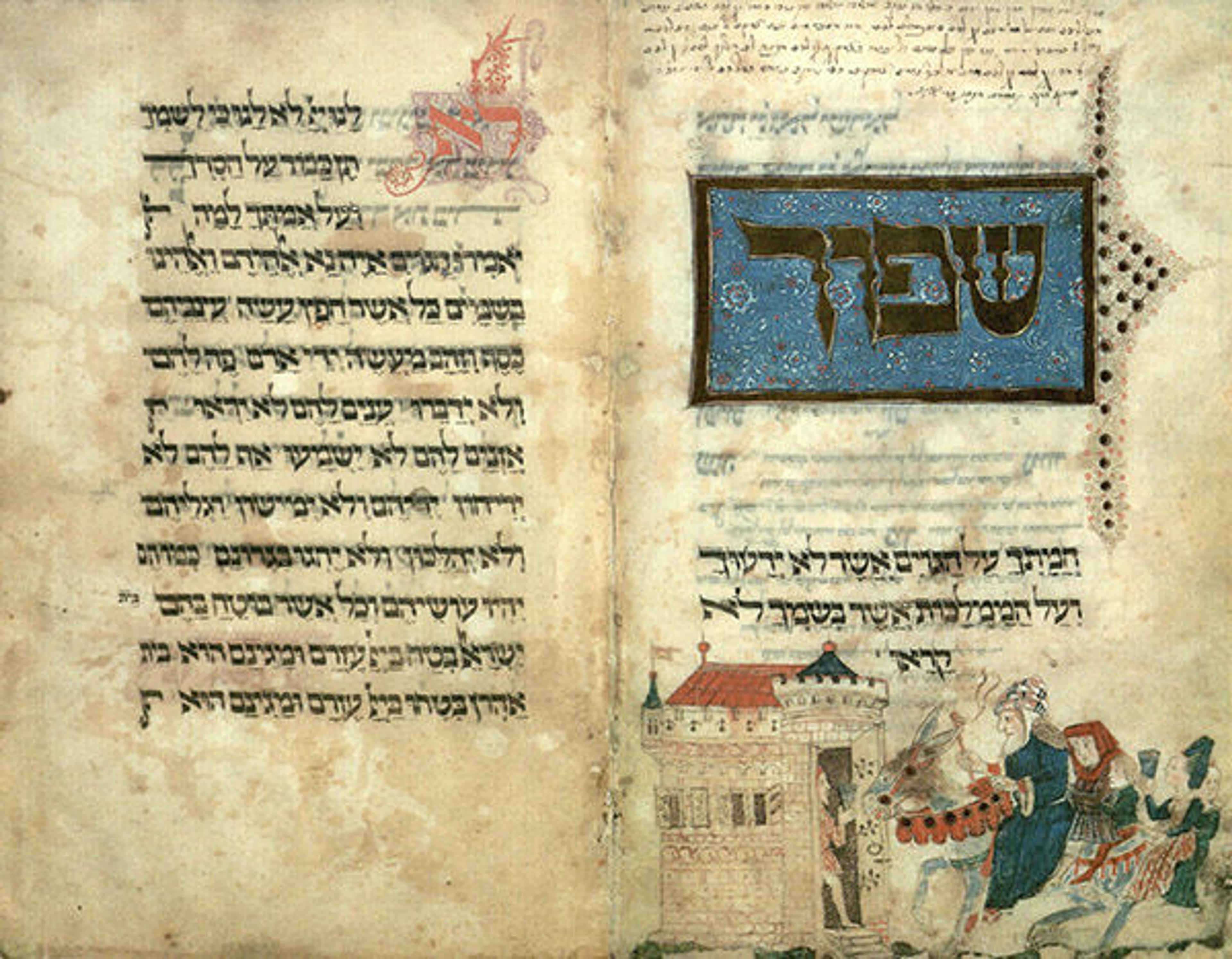
The Washington Haggadah: a facsimile edition of an illuminated fifteenth-century Hebrew manuscript at the Library of Congress. Washington : Library of Congress, 1991. Gift of Friends of Thomas J. Watson Library
For additional facsimiles of Haggadot and information about their iconography and history, please visit WATSONLINE, the library's online catalog.
Dana Hart
Dana Hart is the manager for library administration in the Thomas J. Watson Library.